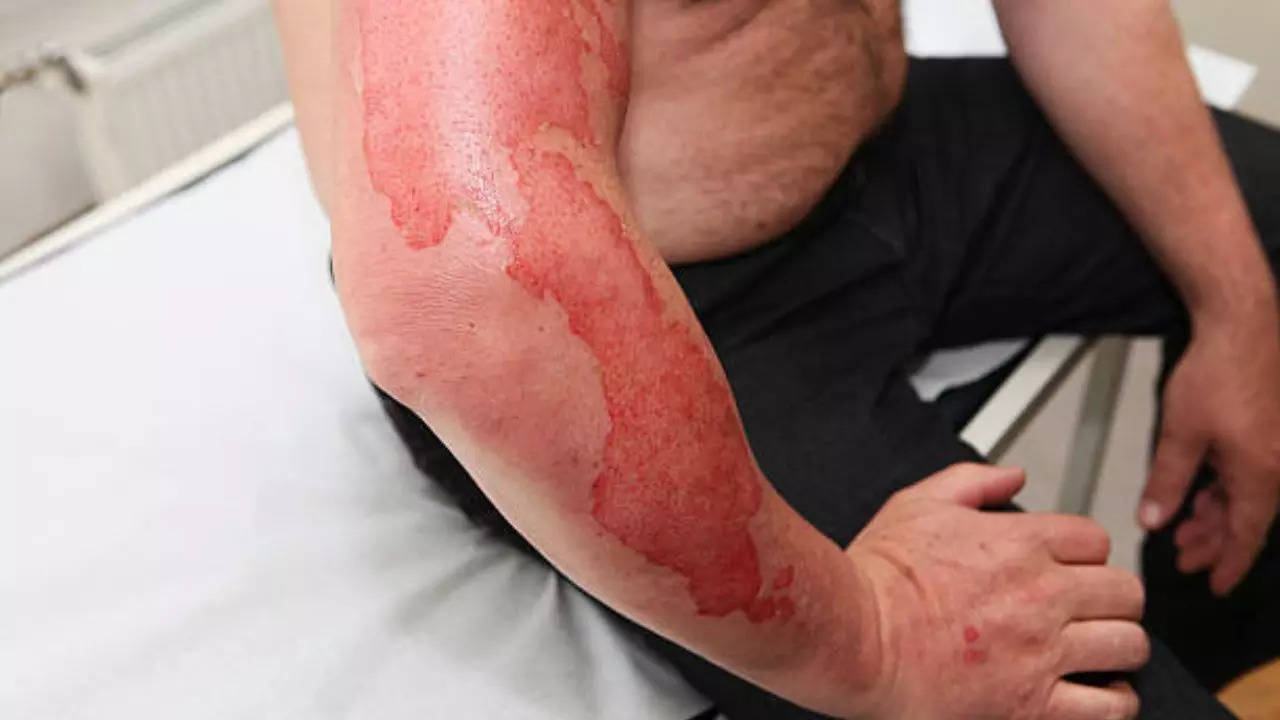Contents
-
news
-
Health
Jaipur Fire: How can you treat first-degree and minor burns before seeking emergency help?
At least eight people were killed and several others injured after a massive fire broke out after a CNG tanker collided with vehicles on the Jaipur-Ajmer highway. Police say that many people seriously injured due to burns have been admitted to the hospital and are being treated. Many also suffered first-degree burns and were provided with necessary medical attention. Read on to know more.

Police said about 40 people were injured, with 28 victims in critical condition and several suffering first-degree burns.
A deadly collision between a CNG tanker and multiple vehicles turned the Jaipur-Ajmer highway into hell, killing at least eight people. According to news reports, the explosion was so intense that several vehicles within a radius of 300 meters were hit and completely burnt. Several drivers were reportedly burnt in the incident, some of whom are in critical condition.
Police said about 40 people were injured and 28 victims were in critical condition. first-degree burns,
What are first-degree burns?,
First-degree burns – also known as superficial burns or lacerations, are an injury that affects the first layer of your skin. Even though first-degree burns are a mild form of skin injuries, they usually do not require medical treatment. However, some superficial burns may be quite large or painful and may require a visit to your doctor.
Signs and symptoms of first-degree burns
The signs and symptoms of first-degree burns are often minor and resolve after several days. The most common things you may notice first are redness of the skin, pain, and swelling. Pain and swelling may be mild and your skin may start peeling after a day or two. However, in contrast, second degree burns form blisters and are more painful due to the increased depth of the burn wound.
For first-degree burns that occur over large areas of your skin, you may experience increased levels of pain and swelling.
Ways to Treat Burns
According to doctors, first-degree burns can be treated easily at home. However, after performing basic first aid, it is always important to show it to a doctor, who will examine the burn to determine its severity. They will look at the burn to see:
- How deeply it penetrates the skin layers
- if it is large or in an area that requires immediate treatment, such as the eyes, nose or mouth
- If there are any signs of infection such as discharge, pus or swelling
- If your burn has become infected, swollen, or is extremely painful and healing slowly, you need to go to the hospital.
To treat a burn at home, be sure to apply a cold compress to it for at least 15 minutes to relieve pain and swelling. However, avoid using ice or extremely cold packs as they can increase irritation.
Do not apply any type of oil, including butter, on the burnt area, as they can hinder wound healing. However, you can use products containing aloe vera with lidocaine that help with pain and are available over the counter. Additionally, you can use honey, body lotion, or any antibiotic ointment to reduce dryness and speed up the repair of damaged skin.
How long does it take for a burn to heal?
As the skin begins to heal, the area around the burn will peel off. Additionally, first-degree burns can take three to 20 days to heal properly. Treatment time may depend on the affected area. Always consult your doctor if the irritation shows signs of infection or the condition gets worse.
Get the latest news live on Times Now with breaking news and top headlines from around the world.


